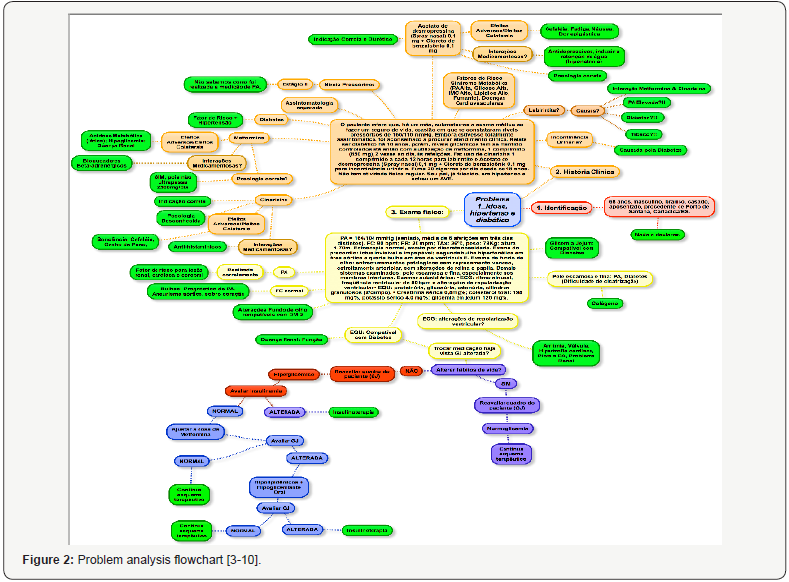Juniper Publishers-Open Access Journal of Case Studies
Problem-Based Learning in the Biomedicine Course of the Faculty of Biomedical Sciences of the State of Espírito Santo: Experience in a Teaching, Research and Extension Project
Authored by Afrânio Côgo Destefani
Abstract
The undergraduate course in Biomedicine aims to obtain a profile of the graduated/ professional “Biomedical”, with a generalist, humanistic, critical and reflexive education, to work at all levels of health care. Based on scientific and intellectual rigor in ethical principles and in the understanding of the social, cultural and economic reality of its environment, directing its action towards the transformation of reality for the benefit of society. Regarding the formation of biomedical, it aims to provide the professional with the knowledge required for the exercise of specific skills and abilities. Such as respecting the ethical principles inherent in professional practice; to act multi professionally, inter disciplinarily and trans disciplinarily with extreme productivity in health promotion based on scientific conviction, citizenship and ethics.
To know methods and techniques of investigation and elaboration of academic and scientific works, evaluate and respond critically the information that is being offered during undergraduate and professional training. To form a dynamic, fast and precise reasoning in the solution of problems within each of its specific qualifications, be endowed with a critical spirit and responsibility that allows a conscious professional action, aimed at improving the quality of life of the human population. To exercise, besides the technical activities pertinent to the profession, the role of educator, generating and transmitting new knowledge for the formation of new professionals and for the society as a whole. This project proposed the formation of an Interdisciplinary Group of Studies (IGS) whose purpose was to promote and complement education with holistic but integrated vision; knowledge integration; communication skills and proactive attitudes.
Keywords: PBL; Biomedicine; Interdisciplinary; Transdisciplinary; Education
Introduction
The pedagogical project of the undergraduate course in Biomedicine of the Faculty of Biomedical Sciences of the ES-Faculdade PIO XII, in the city of Cariacica /ES, Brazil, was prepared in order to meet the requirements of the National Curricular Guidelines (NCG) [1], generalist, humanist, critical and reflexive, to act at all levels of health care, based on scientific and intellectual rigor based on ethical principles and understanding of the social, cultural and economic reality of their environment, directing their action for transformation reality for the benefit of society [2]. The adoption of the Problem Based Learning (PBL) methodology in a Teaching, Research and Extension project aims to meet this goal. In its totality, the curricular matrix has integrated and interdisciplinary contents, covering the basic and clinical sciences necessary for the biomedical formation. In addition, in the second semester of 2014, the Interdisciplinary Group of Studies (IGS) was implemented, whose objective is to offer and complement education with a holistic but integrated vision; knowledge integration; communication skills and proactive attitudes through self-directed study.
The present work is an experience report of the application of this methodology. Our objectives permeated the application of PBL in the course of Biomedicine in the context of the IGS in addition to: Study health problems, including discussions on diagnosis, prognosis, therapeutic planning, and the multidisciplinary team involved. Also discuss the biomedical practice and the markers of the therapeutic process. Expand the clinical experience of the student with presentation and discussion of various health problems, allowing the student to know the various faces of biomedical performance. Aiming at a closer approximation of theory with biomedical practice, the student was encouraged to use books and articles for practical answers and solutions developing in them a scientific spirit, with the formation of autonomous subjects.
Materials and Methods
Target Audience: Students regularly enrolled in the Biomedicine course and who enrolled in GIE cycle 2014/2. Period of realization: August / 2014 to November / 2014;
Methodology: consisted in the application of PBL according to stepwise systematization (Figure 1). A health problem was approached based on an elderly, hypertensive and diabetic patient, with data referring to patient identification, clinical history and physician examination and laboratory tests. Data collection and analysis: semi-quantitative analysis was followed based on an account of individual student experience called “Individual Synthesis”.



Results and Discussion
The meetings were held on a weekly basis and at each opportunity, the steps were presented by the tutor and immediately the students applied the knowledge acquired and used the health problem previously distributed. Of the 10 students previously enrolled only 6 students remained until the end of the cycle claiming incompatibility of schedules for the weekly meetings. Throughout the debates, a flow chart of students’ questions and inquiries was set up to facilitate the systemic view of the problem and interaction of the knowledge required by students in different periods (Figure 2 & 3).
Conclusion
The organ dose and effective dose are within the limits published for dental cone beam radiation. However during our studies the Kodak 9000 emitted the higher dose to the patient than the Sirona Ortho Plus when Panorex Bitewing imaging was obtained using TWAIN. We could not obtain a comparison with EMAGO for the two machines since EMAGO was not the operational system for these machines. For Bitewing imaging the use of TWAIN as the operating system verses EMAGO reduced the radiation exposure to the patient while obtaining comparable images.
For more articles in Open Access Journal of Case Studies please click on: https://juniperpublishers.com/jojcs/
To know more about Open Access Journals Publishers
To read more…Fulltext please click on: https://juniperpublishers.com/jojcs/JOJCS.MS.ID.555576.php




No comments:
Post a Comment